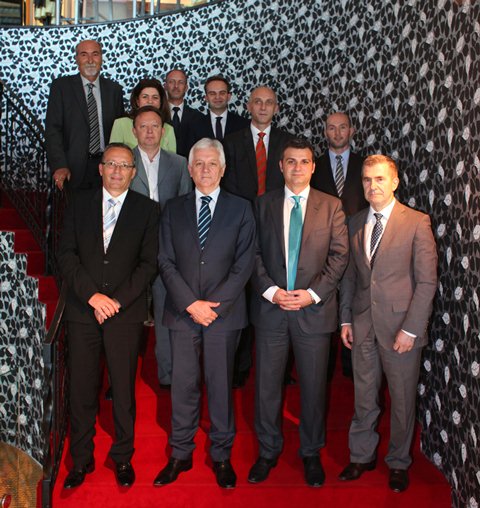BANK OF ALBANIA
PRESS RELEASE
Speech by Governor Sejko at the Summit of finance ministers and central bank governors: "The financial future of the region", 12-13 June 2015, Becici, Montenegro
Publication date: 15.06.2015
Effects of strong changes on world hard currency market on local currencies
Monetary policy in the leading developed economies, which are currently living through a prolonged period of practically zero interest rate, and abundant amounts of liquidity, has unintentionally caused consequences in international foreign exchange markets.
The unprecedented moves during the previous years have started a significant shift in terms of exchange rate movements among the currencies of the major players of the global economy; e.g. when the Federal Reserve reduced its fund rate close to zero in 2009 and proceeded with quantitative easing programs thereafter, it was considered by many as a hidden currency war. The same could be said for the ECB, and many other central banks.

However due to trade and financial linkages with the euro, historical preferences toward the US dollar and low interest rates of the Swiss franc, exchange rate developments of these currencies bear the most significant effects inside the CESEE economies.
In the case of Albania, we are mainly concerned with the euro and the US dollar only due to the fact that Albania was the latest economy to slightly embrace the Swiss franc. By the time it was presented in the market, the central bank was already concerned by the larger share of foreign-currency loans and stopped further expansion by the means of macro-prudential regulation (higher provisions and collateral required).
On the other hand, developments in euro are especially important in terms of our real economic activity, export competitiveness and financial developments, since a substantial amount of trade and of Banks' assets & liabilities (almost half of savings and more than 50% of loans) are held in euro. Meantime, the US dollar is also important as a means of trade and currency of savings.
The outbreak of the crisis caused a lot of concerns in Albania especially with respect to financial stability issues (given that 75% of the outstanding loan portfolio was denominated in foreign currency, mainly euro). However, the Albanian lek has been one of the most stable currencies among all floaters in CESEE or emerging Europe.
Perhaps surprisingly, the Albanian lek emerges as the least volatile currency of all. In the past five years or so, its coefficient of variation is less than 1, whereas that of other currencies varies from 3 to 13 times higher than the Albania's. This performance have been helpful in terms of financial and price stability (inflation rate in Albania is also noticeably less volatile) but, on the other hand, has prevented/postponed a much needed adjustment in trade flows related to consumption and investments.
In general our analysis indicates that the Albanian lek exchange rate fluctuations against the US dollar and Swiss franc have mostly reflected their position relative to the euro, which is the main and most important currency in terms of trade and financial transactions. Currently our economy is more and mostly sensitive to shocks in the euro area, while the response to US or other economic policies follow that of the euro area.
To our best understanding, lek's performance against hard currencies despite large external deficit, falling remittances, and easing monetary policy reflected in the narrowing gap of policy rates between Albania and euro area (the difference was 4 per cent four years ago and it's less than 2 today), reflects two important facts:
First, unlike other CESEE countries, Albania like its peers in the region has not integrated its production and industrial structure with the euro area. In addition, financial intermediation was almost entirely supported by domestic deposits, which have consistently covered more than 100% of outstanding credit. Therefore, at the outburst of the crisis, we did not experience large and substantial capital outflows.
Second, the relative sluggish transmission mechanism (due to balance sheet problems and pessimistic expectations related to situation in neighboring Greece) has not responded proportionally to interest rate reduction. Under these conditions, ECB's quantitative easing program has supported further the Albanian lek's resistance against euro.
In conclusion, I would like to say that this cherished stability of the Albanian lek against the euro is a valuable asset. However, long-term stability will depend on future growth, inflation, as well as patterns and terms of trade. The Albanian lek will continue its free float to reflect market forces, and relative stance of monetary policy.

 Twitter
Twitter
 Youtube
Youtube
 Facebook
Facebook
 Flickr
Flickr
 RSS
RSS
 Subscribe
Subscribe
 Feedback
Feedback